5 Causes of Outside Tire Wear
Tires wear out over time, but uneven tread damage speeds up the need for replacement. Outside-edge wear (like inside-edge wear) is one of the most frustrating and costly forms.
Read on to learn more about the various causes of outside tire wear, as well as how to prevent it from happening. After all, nobody wants to condemn a set of tires any quicker than absolutely necessary.

What Causes Outside Tire Wear?
Outside tire wear can be caused by a number of variables, all of which require special attention. Understanding each potential source of outside tire wear can prove valuable when attempting to remedy the situation at hand.
The following are several of the most common causes of outside tire wear.
#1 – Under-Inflation Wear
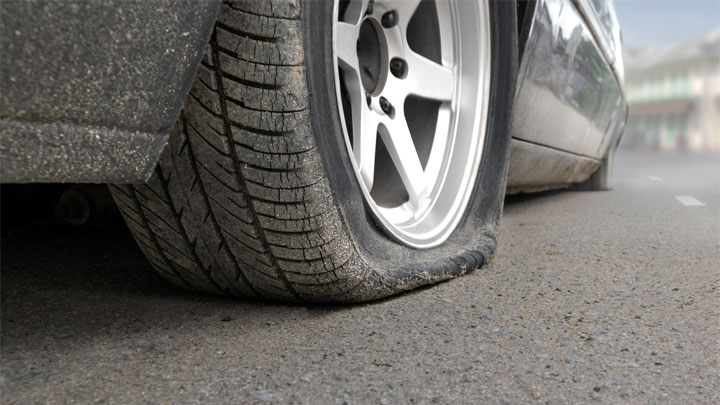
An under-inflated tire will begin to exhibit accelerated wear along the outside edges of its tread, in relatively short order. This is due to the fact that the outer “shoulder” of a tire’s tread is under additional stress when operated in an under-inflated state.
Likewise, the inside edge of an under-inflated tire will also typically show signs of accelerated wear. This condition can be corrected by properly inflating your tires to the pressure specified by your vehicle’s manufacturer and taking necessary precautions to prevent dry rot.
So if your TPMS light comes on indicating low tire pressure, yet a visual check shows no obvious flat tire, you may want to reconsider driving on it. Excessive outer wear is a common sign of driving with low tire pressure, even if it’s only a few PSI.
#2 – Exceedingly Positive Front Camber
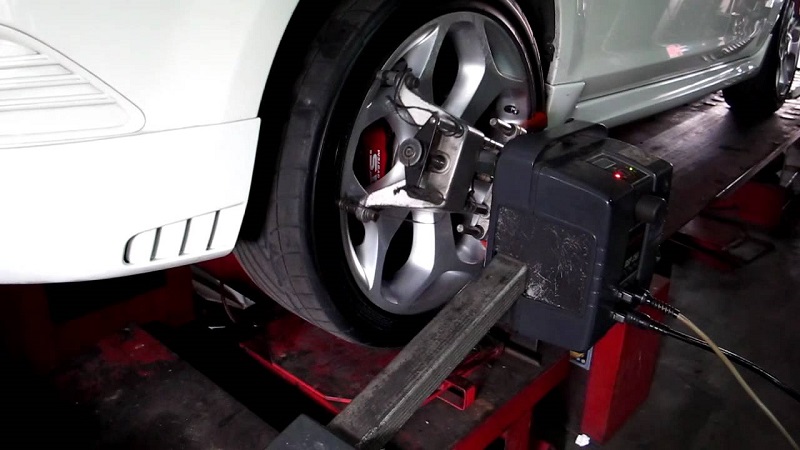
A camber measurement describes the inward/outward tilt of a vehicle’s tires, as compared to a vertical axis. Excessive camber of any type can lead to irregular tire wear. This is most often observed as premature inner/outer edge tire wear.
In the case of noticeable outer edge tire wear, exceedingly positive camber is often to blame. In the bulk of cases, this condition can be corrected with a simple alignment. However, one might also wish to rotate their tires as well, to even out any irregular wear over the course of time.
#3 – Incorrect Toe Adjustment
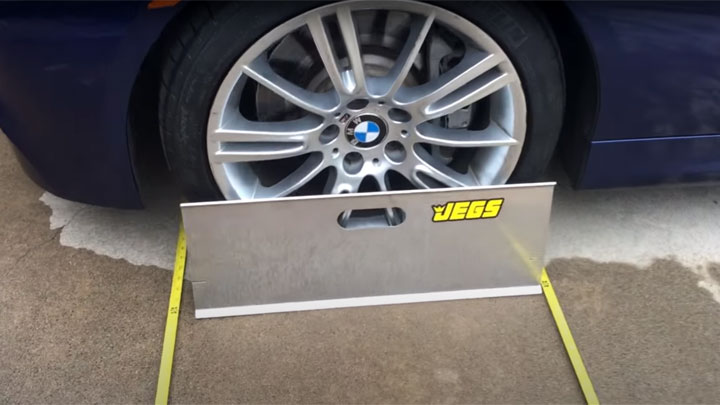
A toe measurement stipulates the inward/outward angle of a vehicle’s front or rear tires, as observed on a horizontal axis. Improperly adjusted toe can lead to numerous issues, including irregular or accelerated tire wear. In many cases, this wear is most often observed along a tire’s edge.
To correct this condition, a vehicle will need to be aligned by qualified personnel, to prevent further wear. Additionally, it is advised to rotate the affected vehicle’s tires, assuming that they are not worn to the point of replacement.
One might also wish to inspect their vehicle’s front end for signs of wear, if an incorrect toe is isolated as the source of irregular tire wear.
#4 – Suspension Component Wear
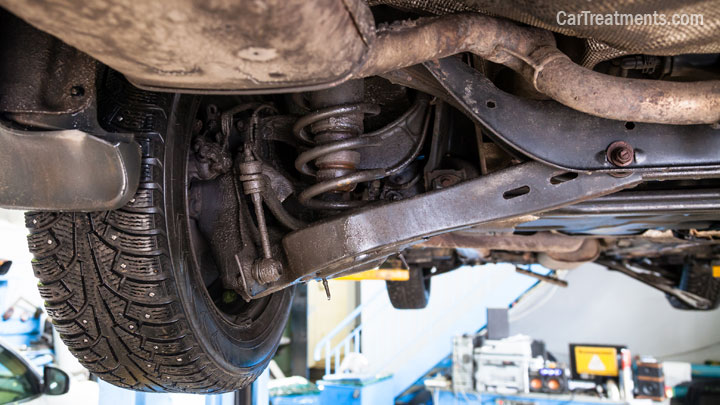
In certain instances, worn suspension components can also cause a vehicle’s tires to wear excessively along the edges of their tread.
As a general rule, suspension-related wear is typically observed as cupping or scalloping within a tire’s tread pattern. This type of wear often makes a tire appear as if its tread is peeling off in a set pattern.
Though wear of this type affects most tires in their entirety, it often first becomes noticeable along the outer edge of a tire’s tread pattern. Fixing wear of this type typically necessitates the replacement of any worn, or otherwise compromised suspension components, such as a vehicle’s shocks and struts.
#5 – Component Damage
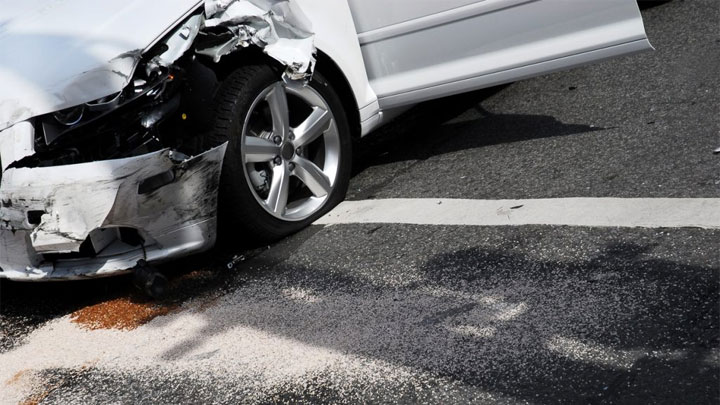
Irregular tire wear of any type can be caused by damage to one or more of a vehicle’s critical steering or suspension components. This damage is most often caused by a collision, no matter the severity.
Even striking a curb at speed can cause substantial damage to a vehicle’s steering and suspension components, under certain circumstances.
Damage to a vehicle’s steering and suspension components can also result from towing excessive weight on a trailer, regular off-road driving, or prior improper installation of front-end parts.
No matter the cause, any compromised steering and/or suspension components must be replaced before tire wear will return to normal. Additionally, when replacing components of this type, a front-end alignment might also be necessitated.
Identifying Outside Tire Wear Patterns
Because unnatural tire wear patters are more common than most people think, keeping an eye out for certain tire conditions will help you troubleshoot the issue at hand depending on what wear pattern you see.
Feathering

Feathering occurs when the edges of your tire’s tread ribs become worn at a diagonal angle. This typically happens due to improper wheel alignment or excessive toe settings. The inside edge of the tread bar develops a feathered, or taper-like appearance.
Cupping
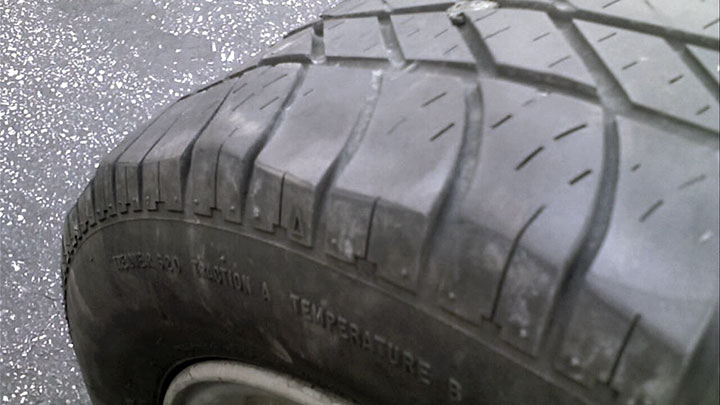
Cupping, also known as scalloping, appears as a series of dips or cups in the tire tread. It is usually caused by worn or damaged suspension components, leading to an uneven contact patch between the tire and the road.
Edge Wear
Edge wear is the wear of the outer or inner edge of the tire tread. It’s often a result of overinflation or underinflation, leading to an uneven weight distribution on the tire.
If you have outer edge tire wear, you most likely have an underinflated tire.
Patchy Wear
Patchy wear refers to irregular tire wear that occurs in random patches across the tire’s surface. This is commonly caused by improper tire balance, leading to uneven contact between the tire and the road.
Is It Safe to Drive With Abnormal Outer Edge Tire Wear?
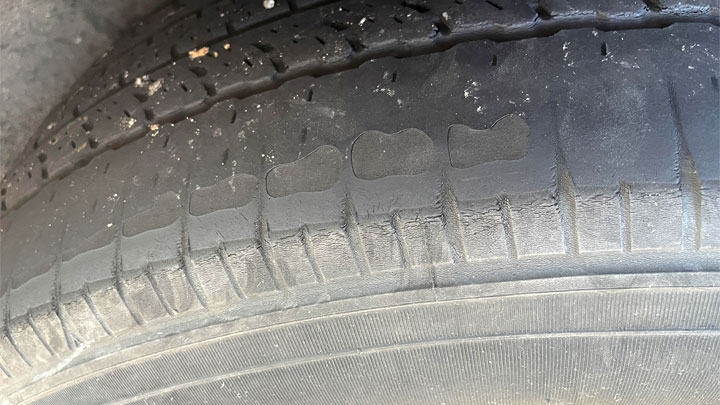
Whether or not it is safe to drive on one or more tires displaying outer edge wear is largely dependent upon the severity of the wear itself.
If such irregular wear has just started, and is rather minor in appearance, one can often salvage such a tire by rotating it to another wheel end location. Of course, the root cause of this abnormal wear must also be corrected.
On the other hand, any tire that has been structured compromised by abnormal wear should be discarded without hesitation. This includes those that have begun exhibiting significant outer edge wear. If secondary rubber (structural non-tread rubber), or belting material has become visible, the use of this tire should cease immediately.
Related: 16 Best Tire Brands (and What We Recommend)
Tires exhibiting irregular wear can be at risk for a blow-out, which in turn, can cause a wreck. This is especially true of any tire with cord or belting material visibly showing.
Driving on tires in this state can be extremely hazardous, and can significantly increase one’s chance of being injured in a wreck. Therefore, periodic tire inspection is of the highest importance, and can even save lives in certain cases.
If in doubt, it is always better to discontinue the use of a particular tire, rather than risking your safety, or the safety of your family. Though tires can be relatively expensive, they are worth every penny when one’s life is on the line.
What If Only One Tire is Wearing on the Outside?
If you notice that only one of your tires is wearing on the outside edge, it’s most likely that the tire in question is underinflated.
Using a tire pressure gauge, make sure the PSI matches (or is near to) the manufacturer’s specifications (found on the driver’s side door jamb or in the owner’s manual).
While that’s the most common scenario, any of the other four causes listed above may also be the culprit.
Do Tires Wear Faster on the Outside?
Unless you’re involved in car racing in some form and have a custom alignment setup, no, tires do not wear faster on the outside. Under typical driving conditions, your tires should wear evenly across the tread.
But in general, front tires (that do most of the work) will wear faster (especially along the edges) than rear tires. Now if you drive a rear-wheel-drive car and are a regular on Friday nights at the dragstrip, or enjoy doing the occasional burnout or donuts, you can obviously dispute that.
How to Prevent Tires From Wearing on the Outside
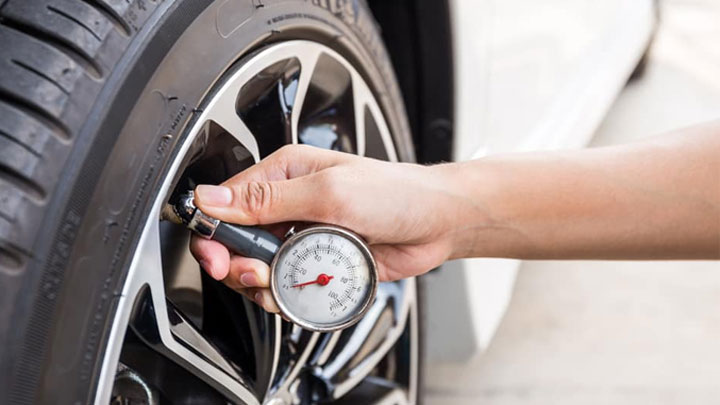
Proper Tire Inflation
To keep your tires from wearing unevenly, regularly check your tire pressure. Tires lose air naturally, so it’s important to ensure they are within the manufacturer’s recommended range.
Running on poorly inflated tires can lead to irregular wear patterns and reduced traction. Use a tire pressure gauge, and follow the guidelines found on the sticker inside your driver’s door jamb or in your vehicle’s user manual. Also, account for changes in weather or temperature, as they can affect the pressure in your tires.
Frequent Tire Rotation
Rotating your tires can help distribute wear evenly across all four wheels. It’s recommended that you rotate your tires every 5,000 to 7,500 miles, or at every oil change. This will help even out any differences in wear between the front and rear tires, ultimately extending their life.
Alignment Checks
Misaligned wheels often cause tire wear on the outer edges. Periodically checking your vehicle’s alignment can help prevent this issue. If you notice uneven or rapid tire wear, poor steering control, or that your car pulls to one side, it’s time for an alignment check.
Suspension Maintenance
Your car’s suspension system, including components like springs, bushings, and shocks, plays a major role in evenly distributing weight and providing traction for your tires. Worn or damaged parts can lead to irregular tire wear.
Regular inspections and maintenance, such as replacing bushings, repairing broken or sagging springs, and fixing bent struts and spindles, can help prevent outside tire wear.
- P0480 Code (Symptoms, Causes, and How to Fix) - Apr 19, 2024
- Car Temperature Gauge Stopped Working? (Here’s Why) - Apr 15, 2024
- Ignition Coil vs Coil Pack (What’s the Difference?) - Apr 8, 2024
